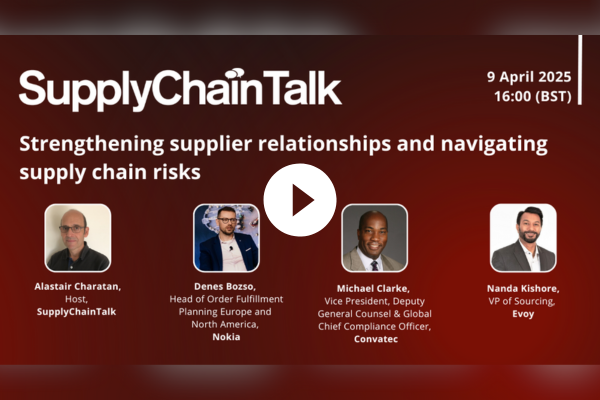How to navigate the contingent workforce landscape and win the war for talent
Sponsored by MagnitKevin Akeroyd, CEO, Magnit
Is your organisation ready for the evolution of work? The global workforce has fundamentally changed over the past five years, with up to half of workers now “contingent” – contractors, gig workers or freelancers. Today, companies spend $5.5 trillion a year on this workforce segment, but many lack the technology, data, processes and know-how to optimise this increasingly critical area.
How C-suites tackles this multi-trillion-dollar challenge is mission-critical to whether they survive and thrive in today’s global marketplace.
Understanding the shifting workforce
Historically, organisational workforce strategy has focused on full-time (FTE) employees who work from the company’s physical office. There are two key reasons why this must change:
• More and more white-collar workers with specialty skillsets, including engineers, IT, marketing and finance, are choosing contingent work because of its added flexibility and growth opportunities
• This growing contingent workforce is not only increasingly remote, but is also being hired more globally
While successfully navigating this contingent landscape requires a new, holistic approach to workforce management, many organisations are clinging stubbornly to their old FTE-centric ways. According to Kevin Akeroyd, CEO at Magnit, “The typical large hiring organisation is not prepared for the transformation taking place in the workforce today. They’ve been doing things one way in the FTE world for decades, but the workplace has fundamentally changed. And the organisational readiness to take on this new challenge is not where it needs to be.”
Managing the contingent workforce: three key challenges
The first step in optimising contingent workforce management is understanding the common obstacles to program success:
1. Fragmented talent supply chains add complexity
When companies hire globally, talent supply chains can encompass dozens of job boards and social networks and thousands of staffing agencies, professional services firms and individual contributors. Add the various location-based laws and compliance regulations organisations need to keep up with, and this can present significant risk for companies.
2. Contingent workforce management maturity is lagging
With the contingent workforce such a new part of the equation, many organisations do not have the same level of internal expertise and centralised management structure as they do for full-time employees. In fact, they are often decades behind when it comes to the contingent workforce, resulting in significant program inefficiency.
3. Technology investment is still lacking
Organisations have the technology, data and analytics infrastructure to give them control and visibility to manage problems in most areas of the business. But they haven’t made those same investments for the contingent workforce segment, and the result is often a crippling lack of visibility and optimisation.
Examining potential ramifications
A large company with billions of dollars in contingent workforce spend could be looking at 20 to 40 per cent of associated waste. If they don’t take steps to realise the savings contingent labour offers, organisations could be missing out on hundreds of millions of dollars.
Additionally, due to massive demand, white collar contingent talent has never been harder to hire. Delivering competitive compensation and a great worker experience before, during and after an assignment is critical to winning the war for talent. If not managed properly, talent quality and time to fill will suffer.
Organisations should also consider the risk of breaking compliance laws, going to court or dealing with class action lawsuits. “Companies cannot afford those kinds of complex legal issues from a financial, reputational and brand damage standpoint,” says Akeroyd.
Overcoming challenges with a single integrated platform
Magnit, an integrated workforce management (IWM) platform provider, helps overcome these challenges through a suite of solutions, including:
• Services: as a vendor-neutral managed service provider (MSP), Magnit’s advisory and execution services essentially make it an extended part of a client’s team, providing tactics and strategies for sourcing and retaining talent in the current landscape
• Technology: Magnit’s software suite enables companies to better manage the entire contingent workforce workflow, including aggregating complex supply chains, matching and optimising candidate recommendations, onboarding, tracking success factors for workers and much more
• Data and intelligence: Magnit’s massive workforce data repository – with more than 205 billion global data points, it’s the world’s largest – gives companies insights and visibility into what they should be paying workers, and where, how and why
• Employer of Record: Magnit EOR helps companies with compliance requirements, payrolling, worker experience and all things associated with the employer-employee relationship
Prior to Magnit, companies had to get all these solutions from different services and companies. According to Akeroyd, “By introducing all these solutions in one place, from one strategic partner, in one platform, Magnit enables organisations to manage the workforce in a more streamlined, strategic fashion and realise the full potential of their contingent workforce programs.”
Demonstrating tangible business impact
The magnitude of the current global workforce shift is massive, and organisations that fail to adjust accordingly risk losing to the competition. “The talent is deciding that it wants to work on a contingent basis, not an FTE basis,” notes Akeroyd. “Even if companies want to ignore this, they can’t because the talent will force them to adjust.”
The quantifiable business impacts of an optimised approach to contingent workforce management are many, including:
• Cost: remove hundreds of millions in expenses out of corporate P&L, moving earnings per share and driving enterprise value
• Time: fill roles much faster, saving resources and improving talent quality
• Worker satisfaction: improve overall employee satisfaction scores and enhance the company brand by approaching the contingent worker experience with the same rigour as with FTEs
• Workforce anatomy: realise measurable improvements in diversity and inclusion by extending DE&I initiatives to the contingent workforce
Delivering quantitative results is key for the C-suite, the board and all stakeholders involved – and Magnit helps drive those tangible results. A recent commissioned Forrester Consulting Total Economic Impact™ study found that an organisation leveraging Magnit Platform to manage its contingent workforce saw a 366 per cent ROI over three years.
To learn more about the benefits of managing your contingent workforce through a single integrated platform, visit Magnit.

Business Reporter Team
Most Viewed
Winston House, 3rd Floor, Units 306-309, 2-4 Dollis Park, London, N3 1HF
23-29 Hendon Lane, London, N3 1RT
020 8349 4363
© 2025, Lyonsdown Limited. Business Reporter® is a registered trademark of Lyonsdown Ltd. VAT registration number: 830519543





